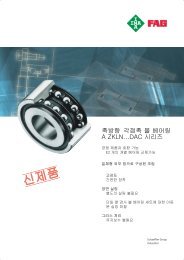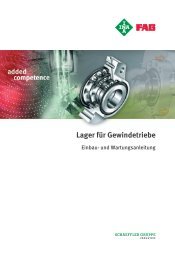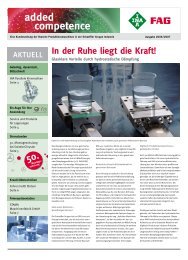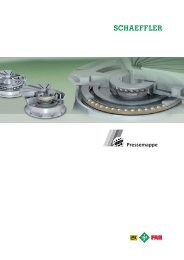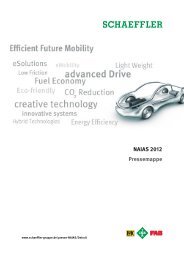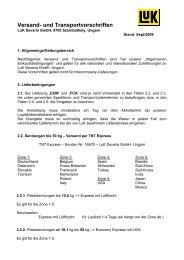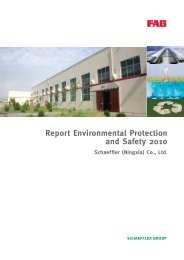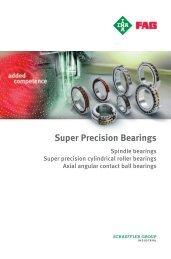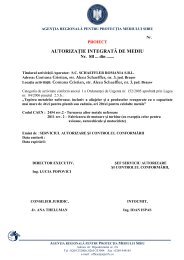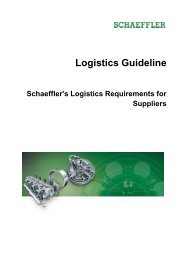Double clutch
Double clutch
Double clutch
Create successful ePaper yourself
Turn your PDF publications into a flip-book with our unique Google optimized e-Paper software.
Figure 4 Clutch temperature curve and possible number of repeated hill starts<br />
of the contact plate is approx. 350 to 400 °C.<br />
Above this temperature, the friction system<br />
starts to suffer permanent damage. In addition<br />
to the maximum temperature, however,<br />
the duration of the thermal load is also<br />
an important factor in damage to the friction<br />
system. The blue temperature curve in Figure<br />
4 corresponds to the situation that exists currently<br />
in vehicles with manual transmissions<br />
when starting off repeatedly on a<br />
12 % incline with a full load and trailer.<br />
The frequency of possible start offs can be<br />
considerably increased if the frictional energy<br />
per start-off is reduced by increasing the 1st<br />
gear ratio, as shown in green in Figure 4.<br />
A ratio change gives an approximately<br />
squared change in the start-off energy. This<br />
statement applies in general to all start-offs<br />
in 1st gear. Increasing the 1st gear ratio by<br />
20 %, relative to a manual transmission,<br />
makes it possible to achieve an adequate<br />
overload capability of the double <strong>clutch</strong> for<br />
most applications.<br />
There is additional potential for increasing<br />
the thermal robustness of dry <strong>clutch</strong>es in providing<br />
the <strong>clutch</strong> housing with suitable openings<br />
to allow the heated air in the housing to<br />
be exchanged with cooler ambient air. The<br />
rotating <strong>clutch</strong> acts as a radial fan; in order<br />
to achieve high air throughput it must have<br />
an inlet near the centre of rotation and an out-<br />
LuK SYMPOSIUM 2006<br />
<strong>Double</strong> <strong>clutch</strong> 9<br />
let tangentially located on the outside diameter.<br />
In order to prevent large quantities of contaminated<br />
air flowing continuously through the<br />
<strong>clutch</strong> area, it is advisable not to open the<br />
<strong>clutch</strong> housing until an air temperature of more<br />
than 100 °C is reached. This can be achieved<br />
simply and effectively by means of a thermostatically<br />
controlled flap (wax actuator) on the <strong>clutch</strong><br />
housing. The effect on the <strong>clutch</strong> is indicated by<br />
the formula:<br />
This means that the more heat that can be dissipated<br />
by the hot <strong>clutch</strong> components, the higher<br />
the temperature differential compared to the<br />
ambient air. In a simplified formulation, the<br />
housing air temperature is 50 K lower and the<br />
component temperature is approximately 50 K<br />
lower. Figure 5 shows a possible design for a<br />
thermostatically controlled <strong>clutch</strong> housing ventilation<br />
system and the resulting component temperatures.<br />
123



